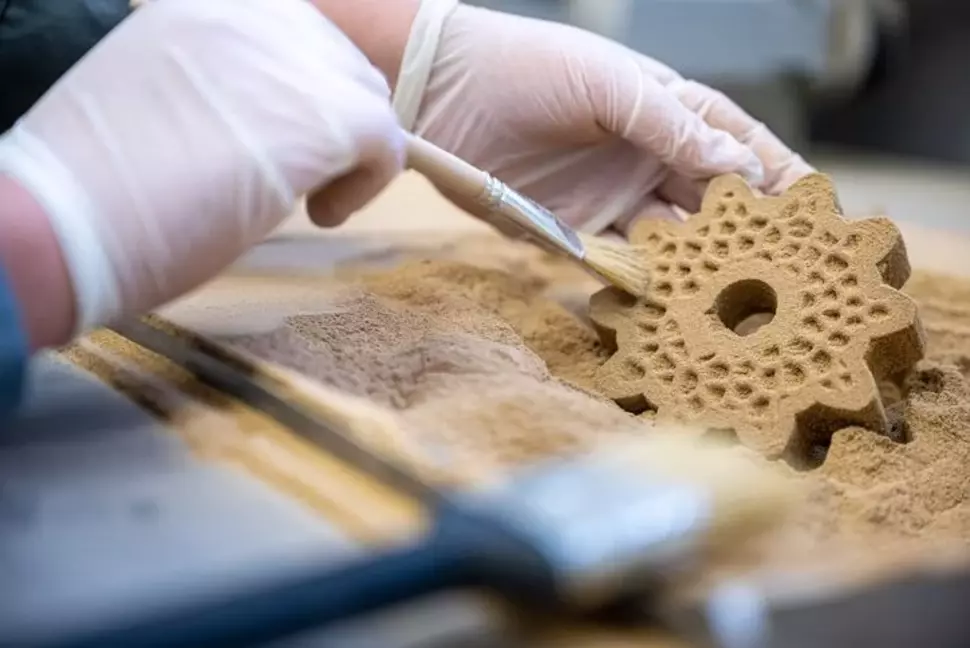Manufacturing innovative products using 3D printing with residual materials
With the Reallabor SAMSax, Saxony has set new standards in 3D printing with residual materials. The three-year project demonstrates how industrial and agricultural residual materials can be transformed into high-quality new components using state-of-the-art additive manufacturing.

The Saxony State Ministry for Infrastructure and Regional Development funded SAMSax via the simul⁺InnovationHub with almost 1.7 million euros. The Technical Universities of Freiberg, Dresden and Chemnitz were involved. The interdisciplinary consortium links companies that regularly generate large quantities of residual materials - for example from the wood processing industry or agriculture - with potential customers for the printed components. This creates new economic opportunities and value creation models that are both ecologically and economically convincing.
The consortium analyzed a total of 53 different residual materials. Of these, 25 were printed and examined in specific applications. The success of using Miscanthus grass was particularly evident: the residues were used to create dimensionally stable theater backdrops using innovative 3D printing technologies - including column capitals, which were used at the Chemnitz Municipal Theater.
Since the end of 2024, a newly developed multi-material printer has been in operation in Freiberg, which sets new standards, particularly thanks to its flexibility in the use of materials. This represents a decisive step on the way to industrial application.
The results of SAMSax have also attracted national and international attention - through presentations at over 25 trade fairs and conferences, cooperation with 17 international research institutions and numerous scientific publications. In addition, the project team succeeded in getting many young people interested in 3D printing - for example at the hands-on trade fair "makers united" in Chemnitz and Nova Gorica (Slovenia) or at the Dresden Hechtviertel Advent calendar.
The partners will continue their collaboration beyond the official end of the project. Low-threshold offers are also planned to make it easier for companies in Saxony to start additive manufacturing with residual materials.
SAMSax - Nachhaltige Additive Fertigung in Sachsen